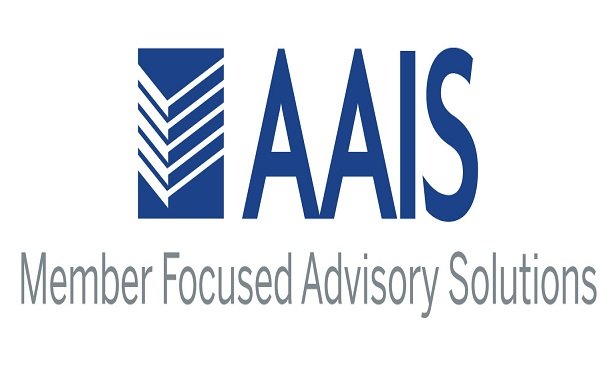Ben Nelson echoed the sentiments of the National Association ofInsurance Commissioners' leadership in his first public pressconference as new CEO of the organization by casting the desiredrelationship with the federal government as one of a “partnership,”not one allowing incursion, pre-emption or even dualregulation.
|Nelson, flanked by NAIC president-elect Adam Hamm, commissionerof North Dakota's insurance department; Michael Consedinecommissioner of the Pennsylvania Insurance Department, andCommissioner William White of Washington, D.C., stuck to the scriptof state-regulatory authority and ability to keep insurers solventand customers covered in the face of a new set of challenges fromthe Federal Insurance Office (FIO) and the federal government.
|There is not a role established for the federal government oninsurance regulation, “nor should there be,” Nelson said. Stateregulation is a “system that is not broken.”
|Nelson, who just saw his office for the first time today inthe Hall of States across from the U.S. Capitol building inWashington, echoed state commissioners' voices championing thestate system, and states' abilties to work together and respecteach other's views, despite differences.
|“There is no need for dual regulation, but…a partnership,” hesaid during a press conference. Later, in response to a reporter'squestion, he said that the federal government role should not beone of “incursion or even pre-emption.”
|Nelson acknowledged, in reference to the year-overdueFIO-modernization report on insurance, that the fear is notdiscussion of insurance, but some sort of increased federal rolegained through legislation. At the outset, Nelson noted that thefederal government/FIO is not a regulator.
|“This is about state-based regulation…to take care of the folksback home,” said the former Nebraska governor, senator, insurancedirector and one-time NAIC executive vice president and chief ofstaff (1982-1985). It is about “availability and affordability” ofinsurance, he said.
|However, when differences among states arise on issues suchas health insurance exchanges he demurred to the statedifferences. “Uniformity is desirable in some cases…and notdesirable in others,” Nelson said.
|“NAIC is not a superstate agency,” he also clarified. The NAICis a “facilitator.”
||Hamm chimed in, noting that the difference of opinion amongstates is a “strength, not a weakness,” of the states workingtogether and on their own to get ready to open enrollment in theexchanges starting in October 2013. It is unclear if some in theNAIC are asking for an extension of exchange deadline dates afteran interview given by Jim Donelon, NAIC president and Louisiana'sinsurance commissioner, yesterday to Bloomberg News. Nelson said hewas just speaking about potential possibilities, not making an NAICstatement.
|Consedine, who helps lead an NAIC health insurancecommittee with the Wisconsin Commissioner Ted Nickel, onthe concerns of states that have taken alternative routes to ACAhealth insurance implementation, i.e. not opting for state-basedexchanges, said the NAIC is “not picking sides on exchanges,”but that the NAIC will help facilitate during the “turbulenttransition” to the exchanges to make it as least painful aspossible. More than half of the states have chosen a differentroute in dealing with the Patient Protection and Affordable CareAct (PPACA), which includes, for states, implementing state healthcare exchanges and addressing Medicare expansion funding.
|Hamm, later in the press conference, referenced the NAIC'sflagship principles-based reserving (PBR) Valuation Manual, whichthe NAIC leadership shepherded through the plenarycommittee, hopes will be adopted by state legislatures in thecoming year, as a “sea change” in actuarial methodologies, but itrequires a buy-in from more than 40 states. Forty-two statebodies need to pass PBR so that it can become the defacto model ofreserving by 2015. California and New York are majorstates resisting it for reserving model concerns involving futurelife insurer solvency.
|On the specifics of his contract with the NAIC, and hisfinancials, Nelson was forthcoming, noting his base salary is$950,000 per year with a two-year renewable contract. Nelson saidhe was pretty far down the road with other suitors, and the NAICsalary offer was competitive. The almost $1 million base salary iscomparable with insurance trade association executives base salary,in some cases higher, but the bells and whistles of options andcontinuing salary after the role is over, are unknown.
|The NAIC does not have to file a form 990 as do tradeassociations and other 501(c)3s for unclear reasons. The IRS doesnot comment on these matters, it said. However, Nelson'sacknowledgement of his salary is the first in the years since theNAIC stopped making the top five salaries available to the public.Nelson also said he and his wife, Diane, had divested andliquidated their considerable Berkshire Hathaway stock before theend of the year, on the advice of tax and investment advisors,unrelated to his position.
|Nelson's name first came up as a candidate given to headhuntersback in November, before the NAIC fall meeting at National Harbor,Md., with interviews to begin in December.
|Nelson also dismissed lobbying restriction concerns, saying thathe took the NAIC job because he felt comfortable with the two-yearcooling off period as an immediate past member of Congress, becausethe NAIC CEO is not a lobbying position. He said NAIC staff willmeet with Hill personnel as appropriate but the restrictions hefaces are as they should be.
|Nelson said being CEO will be his primary function, perhaps anod to his other position, also announced this week, as an advisoryboard member at public affairs shop, Agenda, in Washington.Nelson said the timing of the two hiring announcements wasunfortunate, coming as they did within 24 hours of each other.
|Nelson said later to reporters that this did not pose a conflictand that he was just on the board there and not lobbying, and madeclear his day-to-day job would be with the NAIC.
|In response to queries, the press conference focused a lot onhealth care reforms and the health care exchanges. Nelson, as amember of Congress, worked on the PPACA, and was the instrumentalvote in the Senate for its passage, for which he continues to takea lot of gruff from unhappy insurance agents, state constituentsand others.
|Nelson said that it was envisioned during thecrafting of the PPACA that states would create their own exchangesto keep control of their state regulatory arenas. Thefederally facilitated exchange, expected to be prevalent now, withmore than half the states unready or unwilling to set up astate-based exchange, was only a backstop and not a real option,according to Nelson.
|State regulation though, remained the theme Hamm and Nelson andothers stuck to throughout the press conference, with Hamm notingthat the most important question of the exchangeimplementation in his state would be how it affects or impacts theauthority of state regulation through the North Dakota InsuranceDepartment.
|On international involvement, Nelson said he would be involvedand one of the goals is to work with “international forces,” butsaid after the formal press conference it was unclear if he wouldbe the designee to the International Association of InsuranceSupervisors (IAIS) Executive Committee.
|The NAIC has said previously that the representatives at theIAIS Executive Committee and the US-EU Dialogue are the NAIC CEOand the NAIC president or their designees, but Nelson offered nospecifics on his actual role with the IAIS, saying when hetravelled internationally it would be with staff (as is thecase when the NAIC CEO attends meetings internationally). Onemember of the NAIC leadership team told NationalUnderwriter that Nelson would focus first on domestic mattersbefore international ones.
|Nelson will likely come to be working with FIO Director MichaelMcRaith, who heads the IAIS technical committee, on internationalmatters. Nelson spoke to McRaith, he said, near the beginning ofMcRaith's appointment to the FIO.
|Nelson replaces NAIC Acting CEO Andrew Beal, who stepped intothe role after former CEO Dr. Therese (Terri) Vaughan left theassociation in November. Beal now returns to his roles as COOand chief legal officer.
|“I am proud (to have been asked) and honored to hold thisposition.” Nelson said. The new CEO included his wife, Diane, andhis brother and sister-in-law in the press conference appearanceand deflected no questions.
Want to continue reading?
Become a Free PropertyCasualty360 Digital Reader
Your access to unlimited PropertyCasualty360 content isn’t changing.
Once you are an ALM digital member, you’ll receive:
- All PropertyCasualty360.com news coverage, best practices, and in-depth analysis.
- Educational webcasts, resources from industry leaders, and informative newsletters.
- Other award-winning websites including BenefitsPRO.com and ThinkAdvisor.com.
Already have an account? Sign In
© 2024 ALM Global, LLC, All Rights Reserved. Request academic re-use from www.copyright.com. All other uses, submit a request to [email protected]. For more information visit Asset & Logo Licensing.








